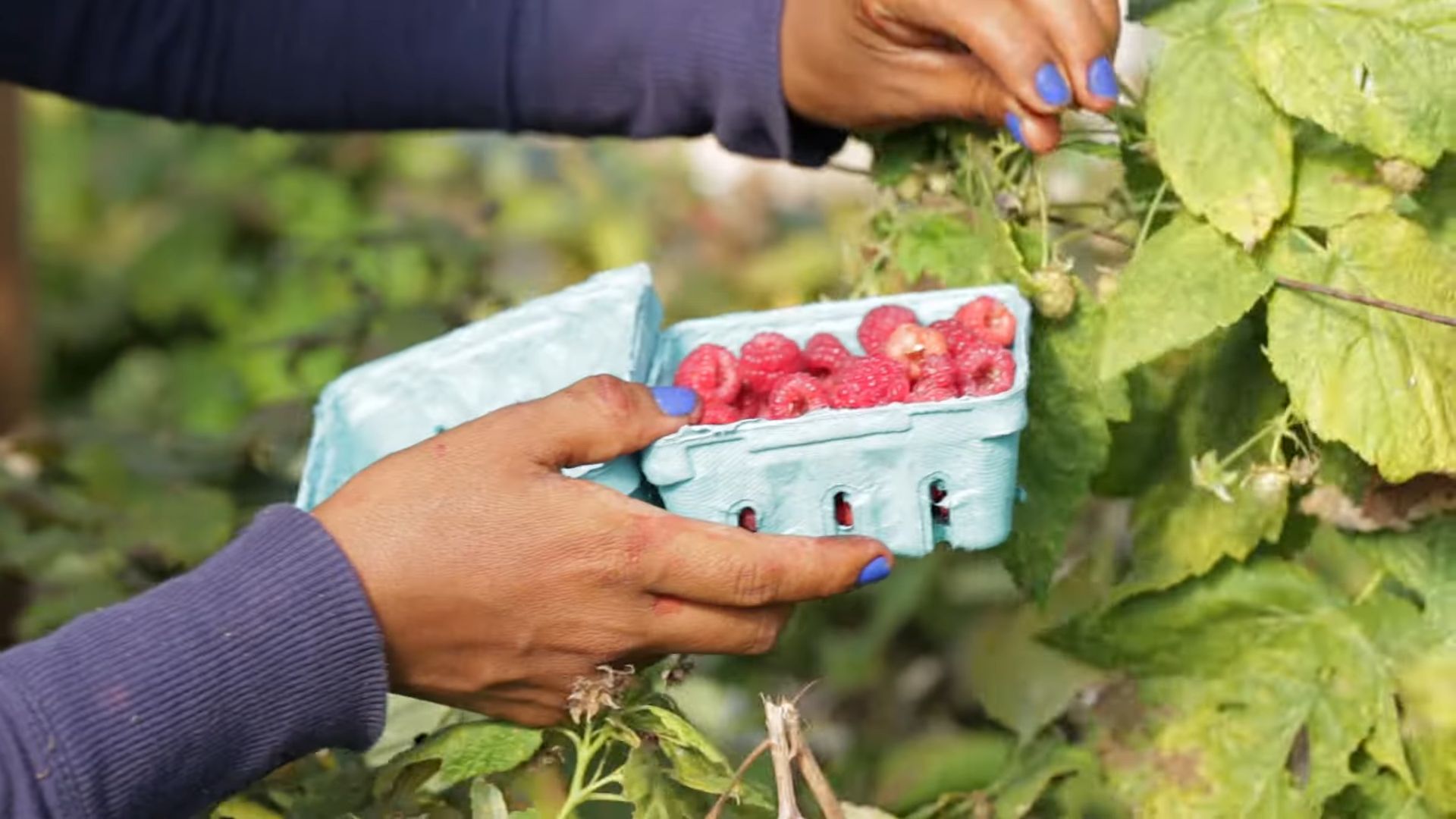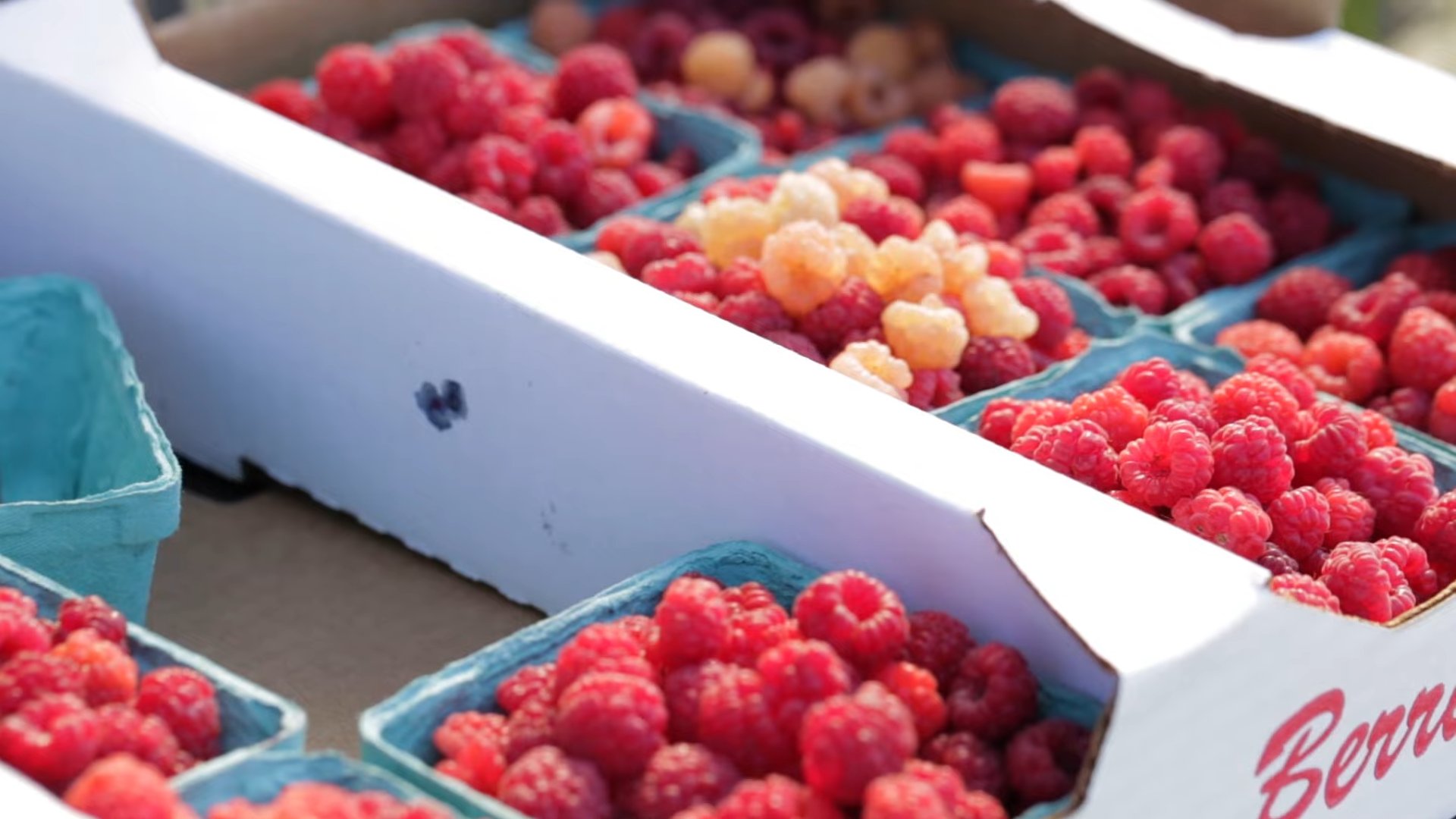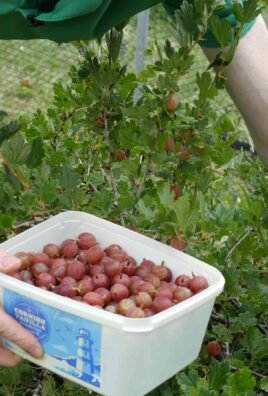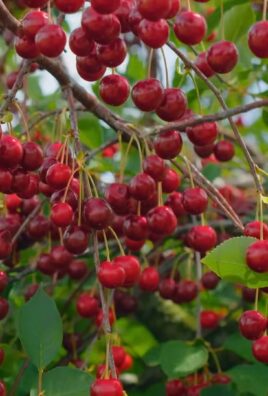Grow Raspberry Vines and unlock a world of sweet, juicy rewards right in your own backyard! Imagine stepping outside and plucking sun-ripened raspberries, bursting with flavor, for your morning yogurt or a delicious homemade pie. Sounds dreamy, right? Well, it’s more achievable than you think! For centuries, raspberries have been cherished for their delectable taste and health benefits, with evidence suggesting their cultivation dates back to Roman times. These vibrant berries have graced royal tables and humble gardens alike, becoming a symbol of summer abundance.
But let’s be honest, the thought of cultivating your own raspberry patch can feel a bit daunting. Where do you even begin? That’s where this DIY guide comes in! I’m here to share some simple, effective tricks and hacks that will empower you to grow raspberry vines successfully, even if you’re a complete beginner. Forget expensive store-bought berries that lack that fresh-picked zing. With a little know-how and some elbow grease, you can enjoy a bountiful harvest of your own, year after year. Plus, gardening is a fantastic way to de-stress, connect with nature, and impress your friends and family with your green thumb skills. So, grab your gardening gloves, and let’s get started on this berry-licious adventure!

DIY Raspberry Paradise: A Beginner’s Guide to Growing Your Own Berries
Okay, so you want to grow raspberries? Awesome! Trust me, there’s nothing quite like popping a sun-ripened raspberry straight from your own garden into your mouth. It’s a flavor explosion! And the best part? It’s totally doable, even if you don’t have a green thumb. I’m going to walk you through everything you need to know to get started.
Choosing Your Raspberry Variety
First things first, you need to decide what kind of raspberries you want to grow. There are two main types:
* Summer-bearing raspberries: These produce one big crop of berries in the summer, usually around June or July. They’re known for their intense flavor.
* Everbearing (or fall-bearing) raspberries: These produce two crops – one in the late summer/early fall and another smaller one the following summer. They’re great for extending your harvest season.
Within these two types, there are tons of different varieties. Here are a few popular choices:
* ‘Heritage’ (Everbearing): A classic, reliable everbearing variety that’s easy to grow and produces delicious red raspberries.
* ‘Raspberry Shortcake’ (Everbearing): A dwarf variety perfect for containers or small gardens. It produces sweet, thornless red raspberries.
* ‘Caroline’ (Everbearing): Another excellent everbearing variety known for its large, flavorful red berries and disease resistance.
* ‘Boyne’ (Summer-bearing): A hardy, cold-tolerant variety that produces abundant crops of medium-sized red raspberries.
* ‘Nova’ (Summer-bearing): A popular summer-bearing variety with large, firm, and flavorful red berries.
Consider your climate, space, and desired harvest time when choosing your variety. Local nurseries are a great resource for finding varieties that thrive in your area.
Preparing Your Raspberry Patch
Raspberries need a sunny spot with well-drained soil. They also like slightly acidic soil, with a pH between 6.0 and 6.8.
1. Choose a Location: Select a spot that gets at least 6-8 hours of sunlight per day. Morning sun is especially important to help dry the leaves and prevent fungal diseases. Avoid areas where tomatoes, peppers, eggplants, or potatoes have been grown recently, as these plants can harbor diseases that affect raspberries.
2. Test Your Soil: Before planting, it’s a good idea to test your soil’s pH. You can buy a soil testing kit at most garden centers or send a sample to your local agricultural extension office.
3. Amend the Soil: Based on your soil test results, amend the soil as needed. If your soil is too alkaline (pH above 7.0), you can lower the pH by adding sulfur or peat moss. If your soil is too acidic (pH below 6.0), you can raise the pH by adding lime.
4. Improve Drainage: Raspberries hate soggy roots, so good drainage is essential. If your soil is heavy clay, amend it with plenty of organic matter, such as compost, well-rotted manure, or peat moss. This will help improve drainage and aeration.
5. Clear the Area: Remove any weeds, grass, rocks, or other debris from the planting area. Raspberries don’t compete well with weeds, so it’s important to start with a clean slate.
6. Dig a Trench or Individual Holes: Depending on whether you’re planting bare-root raspberries or potted raspberries, you’ll need to dig a trench or individual holes. For bare-root raspberries, dig a trench that’s about 12 inches wide and 12 inches deep. For potted raspberries, dig holes that are twice as wide as the pot and just as deep.
Planting Your Raspberry Canes
Now for the fun part – planting!
1. Soak Bare-Root Plants: If you’re planting bare-root raspberries, soak the roots in water for about an hour before planting. This will help rehydrate them and give them a good start.
2. Space the Plants: Space summer-bearing raspberries about 2-3 feet apart in rows that are 8-10 feet apart. Space everbearing raspberries about 1.5-2 feet apart in rows that are 8-10 feet apart.
3. Plant at the Correct Depth: When planting bare-root raspberries, spread the roots out in the trench and cover them with soil. The top of the root ball should be about 1-2 inches below the soil surface. For potted raspberries, remove the plant from the pot and gently loosen the roots. Plant the raspberry at the same depth it was in the pot.
4. Water Thoroughly: After planting, water the raspberries thoroughly to settle the soil and help the roots establish.
5. Mulch: Apply a layer of mulch around the plants to help retain moisture, suppress weeds, and regulate soil temperature. Use organic mulch, such as straw, wood chips, or shredded leaves.
6. Cut Back Canes (for Bare-Root): If you’re planting bare-root raspberries, cut back the canes to about 6-9 inches above the ground. This may seem counterintuitive, but it encourages the plant to focus its energy on developing strong roots.
Caring for Your Raspberry Patch
Raspberries need regular care to thrive and produce abundant crops.
1. Watering: Raspberries need consistent moisture, especially during dry spells. Water deeply and regularly, especially when the berries are developing. Aim for about 1-2 inches of water per week. Drip irrigation is a great way to water raspberries, as it delivers water directly to the roots and minimizes water waste.
2. Fertilizing: Fertilize your raspberries in the spring with a balanced fertilizer, such as 10-10-10. Follow the instructions on the fertilizer package. You can also amend the soil with compost or well-rotted manure in the fall.
3. Weeding: Keep your raspberry patch free of weeds. Weeds compete with raspberries for water and nutrients, and they can also harbor pests and diseases. Hand-pull weeds regularly or use a hoe to cultivate the soil around the plants. Be careful not to damage the raspberry roots.
4. Pruning: Pruning is essential for maintaining healthy raspberry plants and maximizing fruit production. The pruning techniques differ depending on whether you have summer-bearing or everbearing raspberries.
* Summer-bearing raspberries: After the summer harvest, prune out the canes that fruited. These canes will not produce fruit again. Cut them back to the ground. Leave the new, green canes that grew during the summer. These canes will produce fruit the following year.
* Everbearing raspberries: For the fall crop, cut back the top portion of the canes that fruited after the harvest. Leave the bottom portion of the canes, as they will produce a summer crop the following year. After the summer crop, cut these canes back to the ground. You can also choose to prune all the canes to the ground in late winter or early spring. This will result in a single, larger crop in the fall.
5. Support: Raspberry canes can get quite tall and heavy with fruit, so it’s a good idea to provide them with support. You can use a trellis, a fence, or individual stakes to support the canes. A simple trellis can be made by running wires between posts.
6. Pest and Disease Control: Raspberries can be susceptible to various pests and diseases. Monitor your plants regularly for signs of trouble. Common pests include aphids, spider mites, and Japanese beetles. Common diseases include cane blight, anthracnose, and powdery mildew. If you spot any problems, take action promptly. You can use organic pesticides and fungicides to control pests and diseases. Be sure to follow the instructions on the product label. Good air circulation can also help prevent fungal diseases.
Harvesting Your Raspberries
The moment you’ve been waiting for!
1. Timing: Raspberries are typically ready to harvest when they are fully colored and easily pull away from the stem. They should be slightly soft to the touch.
2. Technique: Gently grasp the raspberry and pull it away from the stem. If it doesn’t come off easily, it’s not quite ripe yet.
3. Storage: Raspberries are delicate and don’t store well. It’s best to eat them fresh or use them in recipes as soon as possible. If you need to store them, keep them in a single layer in a shallow container in the refrigerator. They will last for a few days. You can also freeze raspberries for longer storage. Spread them out on a baking sheet and freeze them until solid. Then, transfer them to a freezer bag or container.
Dealing with Common Raspberry Problems
Even with the best care, you might encounter some problems along the way. Here are a few common issues and how to address them:
* Yellow Leaves: This could be a sign of nutrient deficiency, especially

Conclusion
So, there you have it! Growing raspberry vines doesn’t have to be an intimidating endeavor reserved for seasoned gardeners. With a little patience, the right preparation, and this straightforward DIY trick, you can cultivate a thriving raspberry patch right in your own backyard. Imagine the joy of harvesting plump, juicy raspberries, bursting with flavor, knowing you nurtured them from the ground up. Forget the expensive supermarket berries that often lack that intense, sun-ripened taste. This is about bringing the authentic, vibrant flavor of homegrown raspberries to your table.
This method, focusing on [mention specific method from article, e.g., “using dormant canes” or “propagating from root cuttings”], is a game-changer because it significantly increases your chances of success, especially for beginner gardeners. It bypasses the often-tricky germination phase and gives your raspberry plants a head start. Plus, it’s incredibly rewarding to witness the transformation from a simple cutting or cane to a flourishing, fruit-bearing vine.
But don’t stop there! Experiment with different raspberry varieties to discover your favorites. Try growing red raspberries, black raspberries, or even golden raspberries for a colorful and diverse harvest. Consider companion planting with herbs like basil or thyme to deter pests and enhance the flavor of your berries. You can also explore different trellising methods to maximize space and improve air circulation around your plants. Think about vertical gardening solutions if you have limited space. A simple trellis system can make a world of difference.
And remember, growing raspberry vines is a journey, not a destination. There will be challenges along the way, but the sweet reward of fresh, homegrown raspberries is well worth the effort. Don’t be afraid to get your hands dirty, learn from your mistakes, and adapt your approach as needed.
We are confident that this DIY trick will empower you to successfully grow your own raspberry vines. Now, it’s your turn to put this knowledge into practice. We encourage you to try this method and share your experiences with us! Let us know what worked well for you, what challenges you encountered, and any tips you discovered along the way. Your insights will help other aspiring raspberry growers and contribute to a thriving community of passionate gardeners. Share your photos and stories on our social media channels using [mention relevant hashtag, e.g., #HomegrownRaspberries]. We can’t wait to see your beautiful raspberry patches! Happy gardening!
Frequently Asked Questions (FAQ)
What is the best time of year to plant raspberry vines using this DIY trick?
The ideal time to plant raspberry vines using the [mention specific method from article again, e.g., “dormant cane” or “root cutting”] method is typically in late fall or early spring. Planting in late fall allows the roots to establish themselves over the winter months, giving the plants a head start in the spring. Early spring planting, before the plants break dormancy, is also a good option. Avoid planting during the heat of summer, as this can stress the young plants and reduce their chances of survival. The specific timing may vary slightly depending on your local climate, so consult your local agricultural extension office for recommendations tailored to your region.
How much sunlight do raspberry vines need?
Raspberry vines thrive in full sun, which means they need at least 6-8 hours of direct sunlight per day. Adequate sunlight is crucial for optimal growth, fruit production, and overall plant health. If your raspberry vines don’t receive enough sunlight, they may produce fewer berries, and the berries may be smaller and less flavorful. Choose a planting location that receives plenty of sunlight throughout the day. If you live in a particularly hot climate, some afternoon shade may be beneficial to prevent the plants from getting scorched.
What type of soil is best for growing raspberry vines?
Raspberry vines prefer well-drained, slightly acidic soil with a pH between 6.0 and 6.8. The soil should be rich in organic matter to provide essential nutrients and improve drainage. Before planting, amend the soil with compost, well-rotted manure, or other organic amendments to improve its fertility and structure. Avoid planting in heavy clay soil, as this can lead to root rot. If you have clay soil, amend it with plenty of organic matter and consider planting in raised beds to improve drainage.
How often should I water my raspberry vines?
Raspberry vines need consistent moisture, especially during the growing season. Water deeply and regularly, especially during dry spells. Aim to keep the soil consistently moist but not waterlogged. Overwatering can lead to root rot, so it’s important to ensure that the soil drains well. A good rule of thumb is to water when the top inch of soil feels dry to the touch. Mulching around the base of the plants can help retain moisture and suppress weeds.
What are some common pests and diseases that affect raspberry vines, and how can I prevent them?
Raspberry vines can be susceptible to various pests and diseases, including aphids, spider mites, raspberry cane borers, and fungal diseases like anthracnose and cane blight. To prevent these problems, choose disease-resistant varieties, maintain good air circulation around the plants, and practice proper sanitation. Remove any dead or diseased canes promptly, and keep the area around the plants free of weeds and debris. You can also use organic pest control methods, such as insecticidal soap or neem oil, to control pests. For fungal diseases, consider using a copper-based fungicide as a preventative measure.
How do I prune my raspberry vines?
Pruning is essential for maintaining the health and productivity of your raspberry vines. The pruning techniques vary depending on the type of raspberry you are growing (everbearing or summer-bearing). Generally, you should remove any dead, damaged, or diseased canes in late winter or early spring. For summer-bearing raspberries, prune out the canes that fruited the previous year, as they will not produce fruit again. For everbearing raspberries, you can prune them to the ground in late winter to produce one large crop in the fall, or you can prune them less severely to produce two smaller crops, one in the summer and one in the fall.
Can I grow raspberry vines in containers?
Yes, you can grow raspberry vines in containers, but it’s important to choose a large container (at least 15-20 gallons) with good drainage. Use a high-quality potting mix and provide regular watering and fertilization. Container-grown raspberry vines may require more frequent watering and fertilization than those grown in the ground. Choose a sunny location for your container-grown raspberries, and consider using a trellis to support the canes.
How long does it take for raspberry vines to produce fruit?
Raspberry vines typically start producing fruit in their second year after planting. However, some everbearing varieties may produce a small crop in their first year. The amount of fruit produced will increase as the plants mature. With proper care, raspberry vines can continue to produce fruit for many years.
What are some good companion plants for raspberry vines?
Companion planting can be beneficial for raspberry vines, as certain plants can help deter pests, attract beneficial insects, and improve soil health. Some good companion plants for raspberry vines include:
* Marigolds: Repel nematodes and other soil pests.
* Garlic: Deters aphids and other pests.
* Chives: Repel aphids and Japanese beetles.
* Nasturtiums: Attract aphids away from raspberry vines.
* Yarrow: Attracts beneficial insects like ladybugs and lacewings.
How do I know when my raspberries are ripe?
Raspberries are ripe when they are plump, deeply colored, and easily detach from the plant. Gently tug on the berry; if it comes off easily, it’s ripe. Ripe raspberries are also soft and juicy. Taste a few berries to ensure they are sweet and flavorful before harvesting the entire crop. Harvest raspberries frequently, as they can become overripe quickly.





Leave a Comment